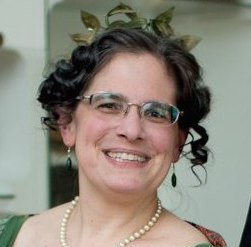One of those questions I get asked all the time by musicians and others is “how many times through the tune for this dance?” The reference is to progressive longways country dances, which were the dominant social dance form in Europe and America from the mid-17th century through the early 19th century and are still enjoying widespread popularity in various living tradition and revival forms.
Modern English country dance and contra practice is for all couples to start the dance simultaneously, and the modern answer to the repeats question would be as many times as needed for everyone to enjoy the dance and fewer times than it would take for people to get bored. Modern Scottish (RSCDS) practice differs in that their dances are generally performed in short sets and have a fixed number of repeats. But if you truly wish to perform country dances in the historical style, it’s a bit more complex!
Up until the mid 19th century, and possibly later, country dances were performed with one key difference from the modern style: the couples did not all start simultaneously. The dance would be led off by the top couple in the set, who would dance down the set with each couple in turn. As soon as the proper number of couples for the dance accumulated at the top of the set, a new couple would lead off, following the original active couple down the set in turn. The dance would continue to “snowball” until the entire set was dancing. As the couple who started the dance at the very bottom of the set reached the top and led off, the dancing would then slowly dwindle as that couple made its way down the set to the bottom until at the end only the last two couples were performing the dance. This form of progression was the standard all the way from the first edition of Playford into at least the early 19th century, and there is some evidence it lasted into the early 20th century.
So what does this mean for the repeat count? In a long set, the dance could potentially go on for an extremely long time – forty-five minutes to an hour in a set of twenty-plus couples, with the tune repeated 80 or 90 times. Pity the musicians cursed with playing a sixteen-bar tune over and over and over and over again! And just how many times over was that? Happily, there’s a formula!
For a dance in duple minor form (two couples needed to perform the figures), the repeats work as follows:
Three couple set: six times
Four couple set: nine times
Five couple or more: add three more repeats for each couple over four
So for a set of six couples, it would be 9+3+3 = 15 times through
the dance. Duple minors were the dominant form in the mid-to-late 17th and early 18th centuries.
For a dance in triple minor form, needing three couples to perform the figures, the formula is a bit different:
Three couple set (shortest possible): six times through
Four couple set: twelve times through
Five couples or more: for each additional couple over four, add four more repeats
So, for a set of six couples, it would be 12+4+4 = 20 times through the dance. Triple minors were the dominant form from the late 18th century onward. In the early 19th century, at least one dancing master added the suggestion that the original top couple should lead off a second time, which has the virtue of keeping more couples dancing longer but doesn’t affect the total number of repeats needed for the dance.
As you might imagine, for reasons of sanity (dancers’, musicians’, and my own), when I call country dances in historical form, I cut sets off at six or seven couples, which is a long enough set to appreciate the “snowball” progression but short enough that no one goes completely batty.

Leave a Reply